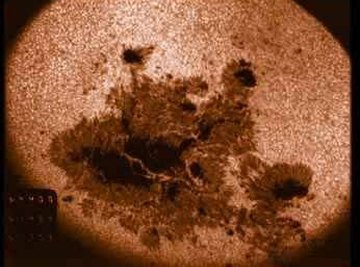
Introduction
Almost every day, with the right equipment, you can see large, dark patches that cover parts of the sun's surface. These dark patches are called sunspots. They are slightly cooler patches of the surface of the sun that expand and contract as they move. It may not seem important to understand sunspots, but they can have a huge effect on our current climate, as well as the future of our world.
History of the Sun Spot
Sunspots have been recognized as early as 28 B.C. when Chinese astronomers noticed small, dark areas of the sun. Unfortunately, because of a thick religious overtone of astronomy at the time and a lack of proper equipment to look directly at the sun, no one knew why exactly the sun had spots. Astronomers were able to look at the sun and see the spots with their naked eyes, but even on cloudy or hazy days when this was possible, it was still quite dangerous and people risked permanent blindness. Eventually, the Dutch, in 1608, invented the telescope, which allowed astronomers to finally get a good look at sunspots up close. However, it was not until the 20th century that enough technology existed to be able to truly discover the mystery of the sunspot.
What is a Sunspot?
Sunspots turned out to be areas of cooler zones on the surface of the sun. These spots are about one-third cooler than the rest of the surface and are protected by magnetic fields that stop the heat from being transmitted into the zone. The magnetic field is formed from underneath the sun's surface, but is able to project itself outside through the surface and all the way to the corona of the sun.
How Sunspots Reach Our Climate
The sun has the largest effect on the climate that we enjoy on Earth. Without it there would be no light, resulting in no growth, since our climate largely relies on the sun to provide the energy needed for photosynthesis. Sunspots were first noticed to affect the Earth when scientists realized that increased activity with sunspots creates increased interference with magnetic instruments on the surface of the earth.
As scientists looked further into this phenomenon, they noticed that near the sunspot, hotter areas of the sun would react with the magnetic field outside the sunspot and create a solar flare. Solar flares project a host of things, including x-rays and energy particles rushing toward the Earth's atmosphere in the form of a geomagnetic storm.
How Sunspots Affect Our Climate
The first most noticeable effect of sunspots on our climate were the northern and southern lights, otherwise known as the aurora. With sunspots come an increase in ultraviolet rays that emit from the outer ring of the sunspots toward Earth. This increase in UV rays affects chemistry of the outer atmosphere and the energy balance of Earth. The idea that sunspots affect Earth's climate is still largely debated, but it is believed that the increase of sunspots on the surface of the sun can reduce the amount of energy and light distributed to Earth. This decrease in energy can result in colder weather and even "mini ice ages" on parts of Earth that are farther from the equator.
However, sunspots affect life on Earth through the Borealis and the Aurora Australis. The magnetic field that is projected from solar flares is much more powerful than the magnetic field that protects Earth, which creates a magnetic storm seen by the colors in the sky during these two events. These magnetic fields can also disrupt power grids and radio signals on Earth and the satellites that orbit Earth.
About the Author
Chris Sherwood is a professional journalist who after years in the health administration field and writing health and wellness articles turned towards organic sustainable gardening and food education. He now owns and operates an organic-method small farm focusing his research and writing on both organic gardening methods and hydroponics.
Photo Credits
http://www.exploratorium.edu
